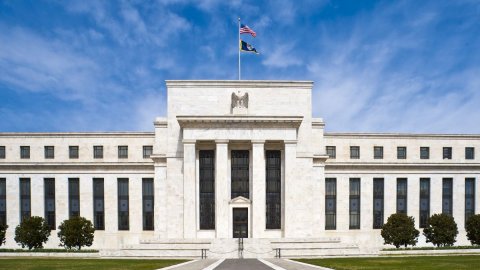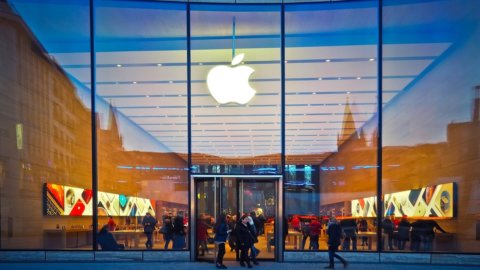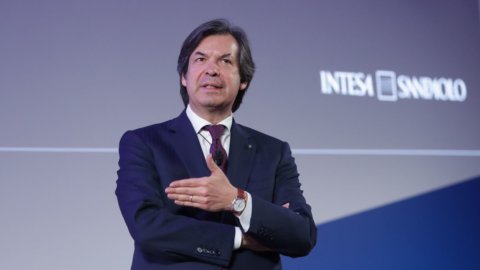Not everything went smoothly, but let's be satisfied: the worst was avoided. The time has come, however, to change the music. This is the message that came from the chorus of central banks, 18 in all, which performed throughout the week at all latitudes. Including the bizarre exception of Erdogan's Türkiye which, as stated by Financial Times Professor Refaat Gutkaynak of Ankara University, "if it weren't for the suffering he is inflicting on 84 million Turks, should be applauded for the fascinating and crazy economic experiment underway". The question now is whether the economist will end up in jail first or whether the Sultan who claims to fight inflation by lowering interest rates will be kicked out.
For the other governors, medicine can only go fromincrease in the cost of money, preceded by the cut in aid used over the past two years to cushion the impact of the pandemic. We will start with the countries most linked to energy (see Norway) or most sensitive to the rise of the dollar (see Mexico). And from the United Kingdom which, in any case, will be limited to a modest +0,1%, good on a psychological level and more than effective in dealing with the executive's credibility crisis. Then, in the spring, the American battleship will move, dragging most of the satellites with it. Finally, it will be the turn of the ECB which for 2022 will limit itself to progressively reducing aid, hoping that the economic recovery alone will make it possible to buffer the effects of the soaring public debt.
A therapy reluctantly adopted after having argued for months that inflation was nothing more than a "transitional" phenomenon destined to return after an exceptional phase linked to the breakdowns caused by the pandemic. But, alas, reality has not obeyed the wishes of politics. Thanks to the variants of the virus and the various bottlenecks that have slowed growth, prices have started to climb and the predictions turned out to be wrong one after the other: Covid is not yet eradicated; growth has progressively slowed both in China and in the USA, as well as in the German locomotive. Prices travel double, if not more, than already estimated. In the meantime, taking advantage of the low interest rates, equities continued to inflate and allowed the indices, aided also by the excellent corporate profits, to go well beyond the forecasts made at the beginning of the year.
Hence the need for the Fed to elaborate an alternative strategy, waving the weapon of three rate increases per year for the three-year period 2022/24 but with a warning transmitted to the markets: we are ready to go back if the therapy proves too strong. The economy, according to the bankers, is still too fragile to proceed on its own without crutches of various kinds. More generally, the world is grappling with the pandemic, grappling with geopolitical tensions (Ukrainian gas in the lead) that threaten to explode at various latitudes, it cannot allow itself the luxury of a last-ditch battle against inflation. The feeling is that at the first sign of difficulty in growth, the hike program will be interrupted whatever the level of inflation at that moment. In the USA where the Fed (plumped up since February by new even more dovish bankers) will not hesitate to postpone hikes in case of need, as the Democrats wish, for now worried about the price of petrol but ready to change course if the needs of the made in the USA. Even more so in Europe. Of course, Frankfurt too has increased its inflation estimates (for the fifth time) in 2022 but at the same time reiterated that rates will remain nailed to zero: the priority remains growth, not inflation.
The markets quickly tuned in to this sentiment a little wavering in the name of "I would like but I don't know as long as I can". Immediate the punishment of tech stocks, for years accustomed to abundant injections of money at a cowardly cost: Apple is losing hits, even more so is Elon Musk's Tesla, the roaring man of the last year. Rivian, the electricity freshman of the year priced at 93 billion at its debut, leaves 9% on the ground after announcing that it has not reached the production of the first 1.250 pieces.
Equally eloquent the rise of the banking sector, benefited from the recovery in interest rates. The fall of the Nasdaq (Thursday evening -2,50%) was matched by the rebound of US banks (Thursday evening +1,1%) in full confirmation of the new scenario depicted by the latest interventions by the central banks. Europe followed suit: European Banks became the best sector on Thursday with a gain of 30,50% against +27% of Techs, second best sector.
It will be this the script of 2022? Experts have drastically lowered their earnings expectations for the coming year: most predict oscillations between -5-10% and a difficult balance. Within the framework, however, good opportunities should not be lacking in price lists, especially if too marked drops will trigger the safety net that central banks can reactivate almost in real time (as both Powell and Christine Lagarde underlined). But, in perspective, troubled times are ahead. As early as 2023, markets could start to worry about the toxic combination of inflation remaining high, growth slowing down and higher rates. It could be a soft landing but the unknowns are not lacking. It's useless, however, to wrap your head right now: let's enjoy Santa's rally, pace of the bishop of Noto who disputes its existence.





